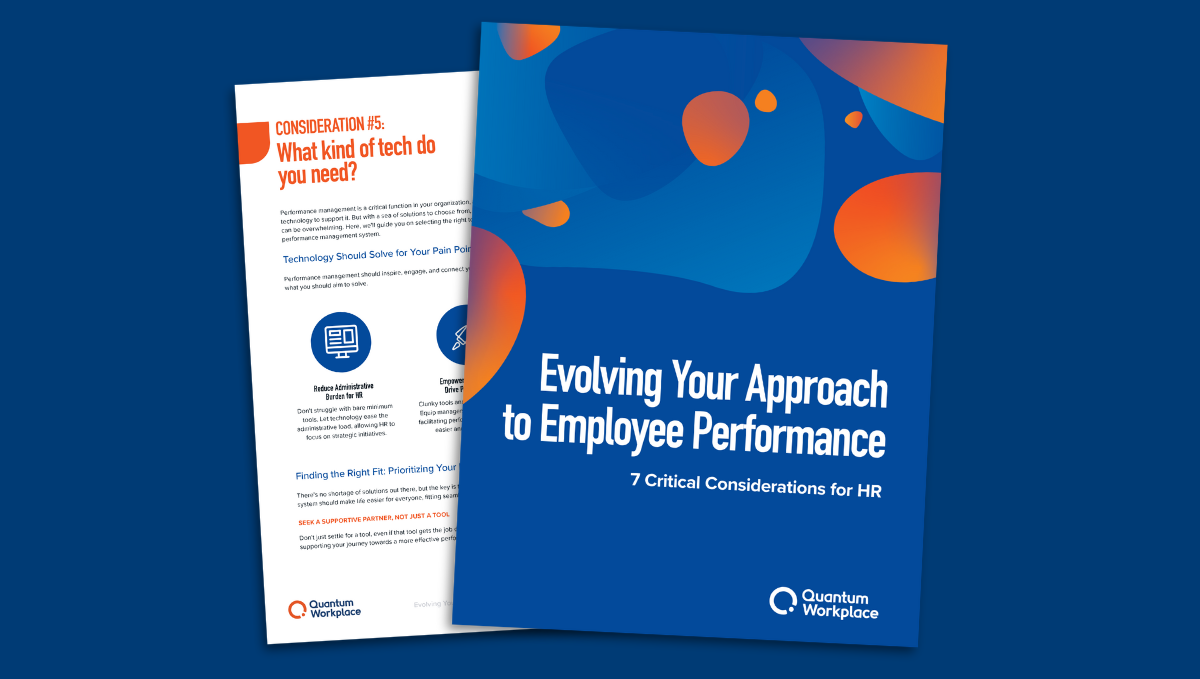5 Must-Haves in an Employee Performance Improvement Plan
Few aspects of a manager’s job are more uncomfortable than creating a performance improvement plan with an employee. The employee might feel embarrassed or hurt, while the manager has to deliver hard truths.
Uncomfortable as these conversations are, they’re unavoidable when performance is lacking. If an employee is failing to meet expectations, misrepresenting core values, or displaying inconsistent performance over time, steps must be taken to correct the situation.
It’s essential that the employee understands they have an opportunity to improve. Avoid making employees feel like they’re being laid off, rather, emphasize their opportunity for growth. They need to know what has to be improved and when. Make it clear that they are ultimately accountable for their improvement, but they have your support and resources.
Consider these 5 tips as you craft the performance improvement plan and prepare for your conversation:
1. Be specific and objective.
Clearly convey exactly why the employee’s productivity and/or behavior isn’t up to par. Bring examples of what good performance looks like, ideally from things the employee worked on previously. Be prepared to answer questions and explain why the employee’s performance doesn’t match the ideal state.
2. Align on a plan.
Create shared expectations that both parties feel comfortable with. Include the employee in the plan’s formation, giving them a voice in their future. When employees agree on a plan and understand the intention, they have increased buy-in and are more likely to tackle their challenges head on.
Provide perfect clarity by crafting a SMART goal that you and the employee feel addresses the current problem. With clear, outlined steps, your employees can envision their path to success.
3. Acknowledge all potential outcomes.
Will the employee be let go if they fail to improve? Might they take on a new position or be transferred to another department? What will happen if their performance gets better? The employee should be aware of all possible results.
Don’t threaten your employees, but be honest. Outline potential positive and negative outcomes that could result from the employee’s actions. Not only will this realization provide transparency, but the possibilities should motivate improvement.
4. Follow up regularly.
All managers and employees should have regular conversations, regardless of the state of their performance. But when performance is lacking, these conversations are even more important. We suggest checking in with the employee bi-weekly to monitor progress and discuss what’s working and what’s not.
Remember to coach, rather than manage your employees’ performance. Employees should have control over their productivity and performance, and it’s your job to help motivate them. Empower your employees with proper guidance and feedback in your follow-up conversations.
5. Document the conversations.
It’s easy to forget what was discussed and when, so make sure your conversations are detailed in a central location that you both can access. This makes your expectations concrete and clear, and enables both parties to reflect on and track progress according to the discussion. Any possible miscommunication or forgotten details are minimized with an effective one-on-one tool.
Following those five suggestions will help you create a clear, shared performance improvement plan and hopefully avoid turnover.
Keep in mind:
The conversation is still probably going to be uncomfortable, but these tips should make the meeting a little easier and lessen the awkwardness.
Remember that your conversations don’t need to be highly formal and structured. Don’t read off a script—allow for personalization, flexibility, and authenticity to make both parties more comfortable.
Be upfront:
When you send a calendar invite for a performance improvement discussion, carefully consider your language. Make it very clear that current performance is not satisfactory and this meeting is the first step in saving their current role. Catching employees off guard is not an effective approach—give them an opportunity to prepare for the conversation too.
Share the floor:
Allow the employee to have a voice and share their point of view. Outside factors that you didn’t know about may be negatively affecting performance. Allow them to ask clarifying questions and provide their perspective.
Your employees likely have just as much to say (if not more) about their performance as you do. It’s very important that this meeting is a two-way discussion, not a lecture where the employee feels attacked or scolded.
Consider the impact:
The meeting’s location is significant—don’t embarrass your employees by making your conversations public. Schedule the meeting somewhere private but comfortable. If the conversation is held over zoom, ensure neither parties are in an open office, surrounded by others.
Give employees time to collect their thoughts. Working from home or taking the rest of the day off can give them time to process. Check in the following day to ensure both of you are on the same page and the employee has the right resources to tackle their challenges.
While these conversations are difficult to conduct, they are necessary to the success of your employees and the health of your organization. Avoid unnecessary turnover and develop top talent with the right approach to your performance improvement plan conversations.
Ready to make performance management a priority? Download our ebook to get solutions to your struggles in performance management.







